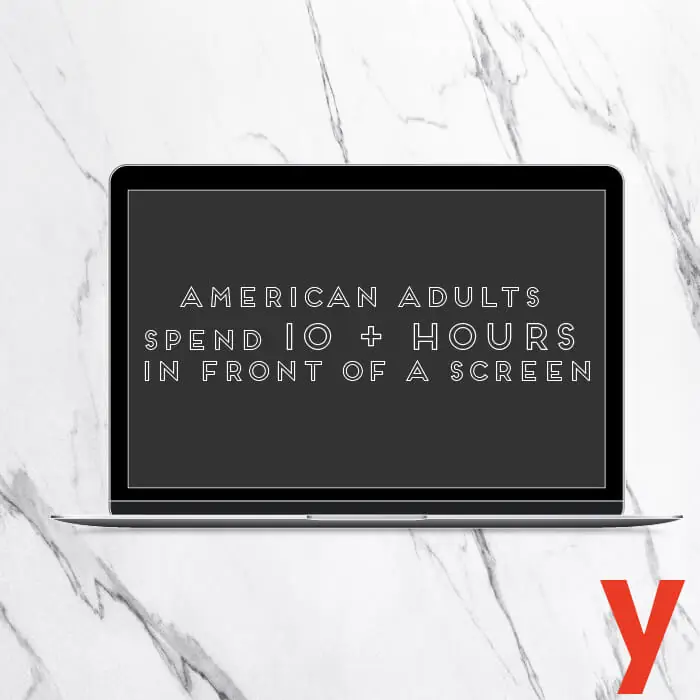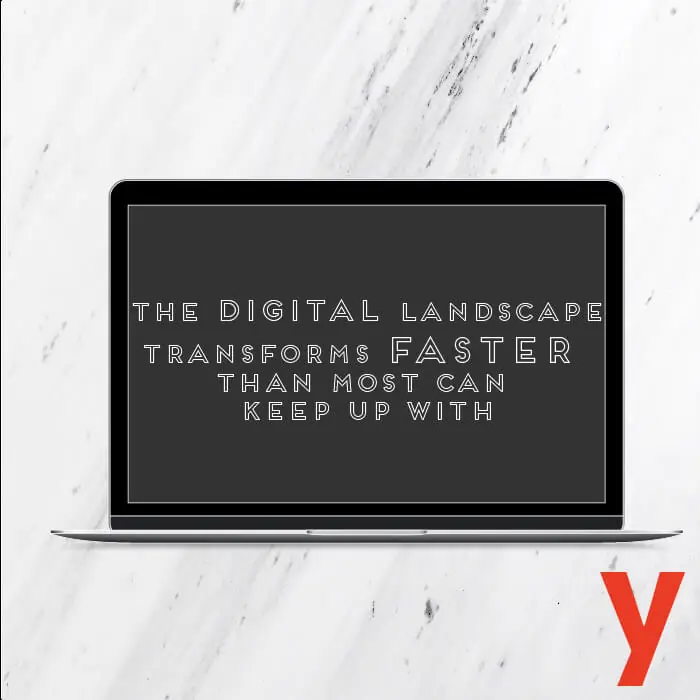From dawn to dusk, it’s not the moon or rising sun greeting us at the beginning and end of every day. That glow, the one you feel warming your cheeks—it’s a smartphone, a tablet, a laptop. It’s a device that knows you all too well, while always wanting to learn more. This is the digital age. This is the future of your brand.
 In a time where the average American adult spends 10+ hours in front of a screen every single day, brands have been presented with new challenges to overcome, and opportunities to grab hold of. After all, a digital-first world demands digital-first companies driving the possibilities. In relation to branding, a digital-first approach puts, well, digital first. It’s a method that champions the digital implications of every touchpoint between consumer and brand; from the overall look to every single interaction had along the journey.
In a time where the average American adult spends 10+ hours in front of a screen every single day, brands have been presented with new challenges to overcome, and opportunities to grab hold of. After all, a digital-first world demands digital-first companies driving the possibilities. In relation to branding, a digital-first approach puts, well, digital first. It’s a method that champions the digital implications of every touchpoint between consumer and brand; from the overall look to every single interaction had along the journey.
While the tactics of marketing days gone by were once built around passive consumers absorbing information through a more streamlined and determined path, those of today have certainly changed. Nowadays, competition is high and advertising space—while diverse in strategies—is scarce in terms of consumer attention. Consumers have access to brands with the swipe of their finger and “the norm” for how they learn about and interact with them is constantly in flux.
What Putting Digital Media First Looks Like
At a very basic level, brands understanding the importance of digital spaces means they are fitting every single element of their brand to those channels. They are not using digital outlets to simply plug and play into long-standing strategies but rebuilding those strategies from the ground up to create entirely new experiences.
Multi-screens paired with multi-channels means thoughtfully selected fonts and imagery that’ll translate via a giant billboard and pocket-sized phone screen. It means a consciousness for load time when developing longer form content and interactive experiences. And an awareness for how Google might crawl a page in relation to your search results and consistency in voice using 140 characters and beyond.
In looking at brands who traverse multiple channels to shape their voice and engage customers across a variety of channels, Mr. Porter is a perfect place to start. A “global destination for men’s style,” the brand uses digitally-conscious, stylized photography and strong writing to produce a weekly online journal that doubles as a click-to-shop experience. This editorial content extends to its social presence with a heavily engaged Instagram account and YouTube stream full of how-to videos.
Whole Foods embraces a similar model offering an experience through their website that allows customers to search recipes, find tips on healthy eating, and embrace seasonal trends in natural health. An interactive Instagram channel puts community at the forefront with regrams and spotlights. And through YouTube, they dive into a number of relevant topics that are sure to put them at the forefront of Google’s search results.
From another angle, consider the success of Starbucks and their mobile app adoption. Back in 2011, the company rolled out “the nation’s largest mobile payment program” and provided visitors with a new way to engage their favorite coffee chain digitally in the palms of their hands, whether in-store or on-the-go. Mobile transactions exceeded 26 million dollars within that first year and has since seen the app transform into a payment method, rewards system, gifting outlet, and music hub in partnership with Spotify.
Just to be clear, a digital-first approach doesn’t mean a neglect of all things traditional. Just look at Pinterest for example, who launched their first major ad campaign in June of this year with billboards in Times Square. There is still value to be found in advertising outside of the virtual world and in melding the two together, brands have even more opportunity to elevate affinity in more meaningful ways than ever before.
 Making Room for Flexibility and Reactivity
Making Room for Flexibility and Reactivity
In embracing digital, brands have inherently adopted greater consideration for the importance of both flexibility and reactivity. The digital landscape transforms faster than most can keep up with, but for those willing to embrace agility alongside the branding experiences they create, the return can be monumental. Consider Google’s doodles and the ability they have to pay homage to something more than brand loyalty. They literally turn something as simple as their logo into an interactive, timely experience—something that drives word-of-mouth and customer engagement with every single click.
Looking through the lens of a branding agency, the relationship between client and creatives has required drastic change alongside these digital outlets. Embracing a more fluid and thoughtful approach as a digital branding agency sets both parties up for success in fast-paced markets. Memorable campaigns are a result of collaboration and reacting at the right time in the right way for the right audience.
Take into consideration Old Spice and their wildly successful Old Spice Man campaign developed in conjunction with agency expertise. They created personalized videos in response to fan comments on Facebook and Twitter and the results spoke for themselves. Their reacting in a timely way with quality content through highly engaged digital channels led to some serious reach at around 65 million total views. It’s this kind of approach to branding in the digital age that speaks to how impactful and memorable a brand can become.
For more from a Chicago digital marketing agency that puts consciousness at the forefront of strategy, contact us today. We are Mabbly.




